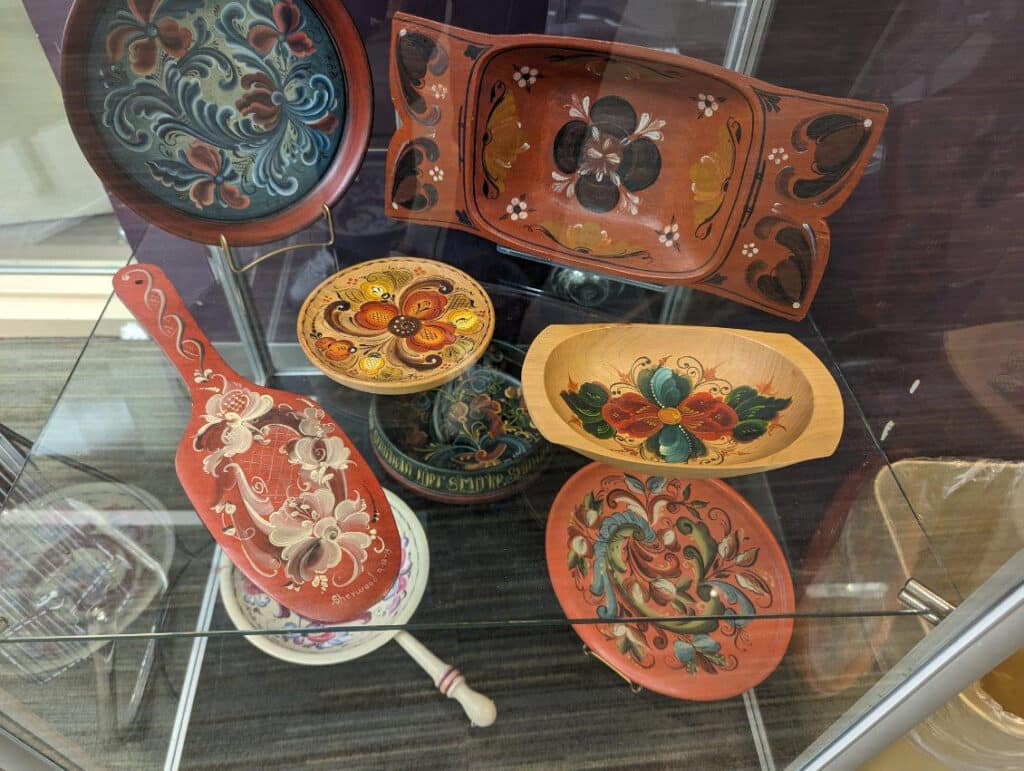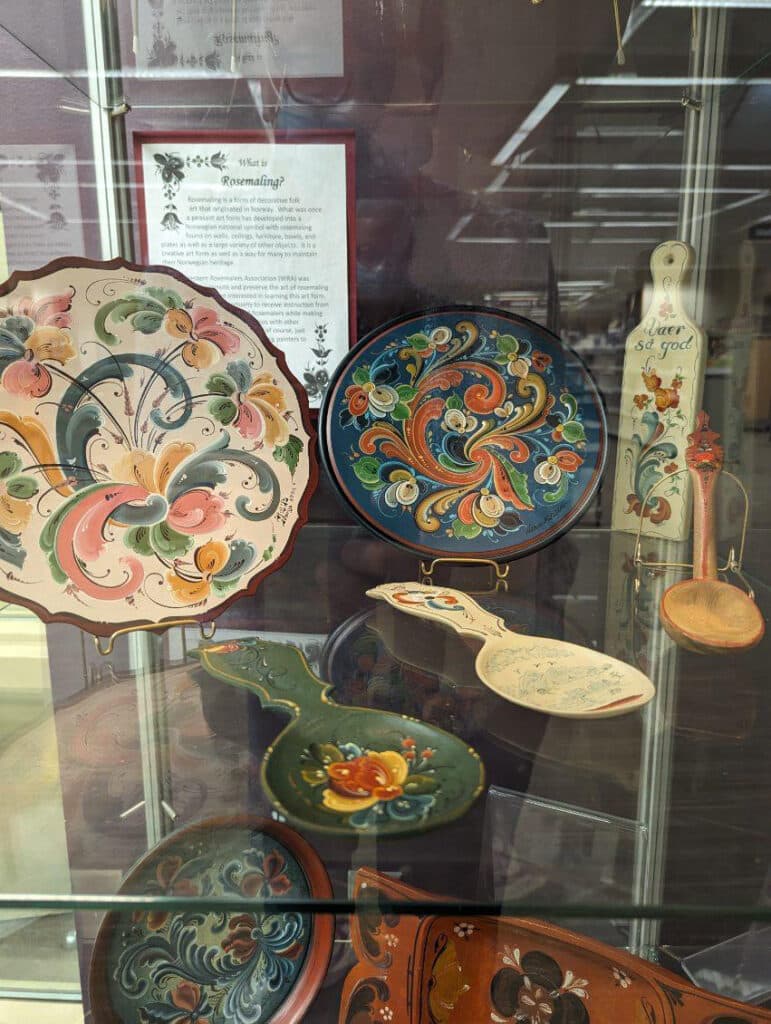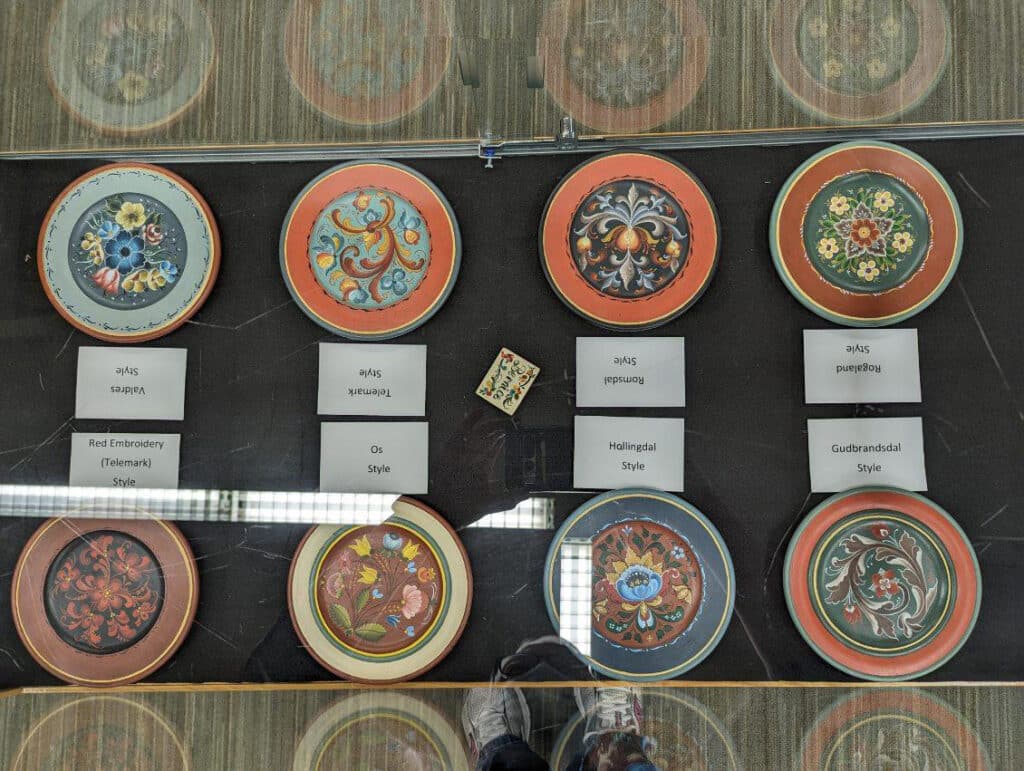Arts & Entertainment Community
Rosemaling connects Gig Harbor to its Nordic heritage
When Marilyn Mahnke moved to Gig Harbor 20 years ago, she discovered a group of people dedicated to keeping their Norwegian heritage alive through painting.
Mahnke’s maternal grandmother was part of an influx of immigrants who came to the United States in the 1800s. They brought with them traditions, household items and craft forms. But it wasn’t until Mahnke moved to Gig Harbor that she became interested in rosemaling, a Norwegian folk art style of painting.
Rosemaling styles
Rosemaling, which translates to rose painting, has distinct styles that correlate to the regions of Norway.
Mahnke joined the Western Rosemalers Association soon after she moved to the area and learned more about the styles and uses for it. The association formed in 1975 and meets through Zoom, due to the interest of participants in the entire western region, including Alaska, Idaho, California, and Oregon. Mahnke is now the past president of the organization.

Local artists use techniques unique to Norway called rosemaling to decorate plates, baskets, and other wood items. Photo courtesy of Bennie Weeks
In 1900, Gig Harbor’s Nordic immigrant population was the largest of any ethnic group and continued to grow, according to documents from the Harbor History Museum.
Three main styles of rosemaling are: Telemark, a region in southern Norway; Rogaland in the west; and Hallingdal in the east. Each style uses distinct colors, scrolls and flowers. However, there are many other styles and patterns that are also named for the region in which they originated.
Acquired taste for some
Artists use painting techniques and a variety of paint colors to replicate the styles of the original folk art, to decorate household items such as wood bowls, plates, baskets, clocks and even furniture that they purchase from local artisans, or from craft stores. Some artists keep the works of art for their own use. Others sell theirs at craft fairs, Mahnke said.

Local artists who are part of the Western Rosemalers Association employ a variety of paint colors and traditional patterns to decorate spoon rests and other wood items. Photo courtesy of Bennie Weeks
“Some have patterns that they go by, otherwise it is up to the artist. I have a poster that has 15 styles, all from different areas of Norway,” she said.
Julie Ann Hebert, the association’s historian, hosts a group of painters at her home in Puyallup each week. She has been involved with the association for 45 years. Her mother was a rosemaler in Wisconsin.
“My mother was a retired teacher, and she found rosemaling later in life, and I didn’t like it then at all. But over time, after she passed, I inherited everything, so I went to work and found a teacher, and I guess I haven’t stopped,” Hebert said.
Norwegian history of rosemaling
Rosemaling began around 1750, when Norwegian artists began copying work by French and Italian artists in churches and homes, she said.
“Norwegians copied what they saw, and started their own style, so it’s a variation, and not a realistic representation (of nature),” she said. “They paint what they see in an imaginative way.”
The association has contracted with master teachers over its nearly 50 years of its existence. Some come from Norway and others from the Midwest. Hebert said that the art waned in popularity in Norway over the years. Now some Norwegians are learning from Americans who have kept the tradition alive.

Various styles of rosemaling. Photo courtesy of Bennie Weeks
“Some of the American teachers here go to Norway to teach, and some of them go to Japan,” Hebert said. “It has spread through the arts and crafts, and is well known in Japan. There are even books published in Japanese for rosemalers.”
To continue to spread the word about the artform, and keep it alive, the association looks for ways to display pieces in public spaces. Libraries often provide good display sites, or other buildings that have glass cases.
“It has to be a glass case, because we don’t want items sitting out in the open,” Mahnke said. “Pacific Lutheran University has a display in the Scandinavian Cultural Center, and those pieces have been donated.”
For more information on rosemaling, visit westernrosemalers.com.

